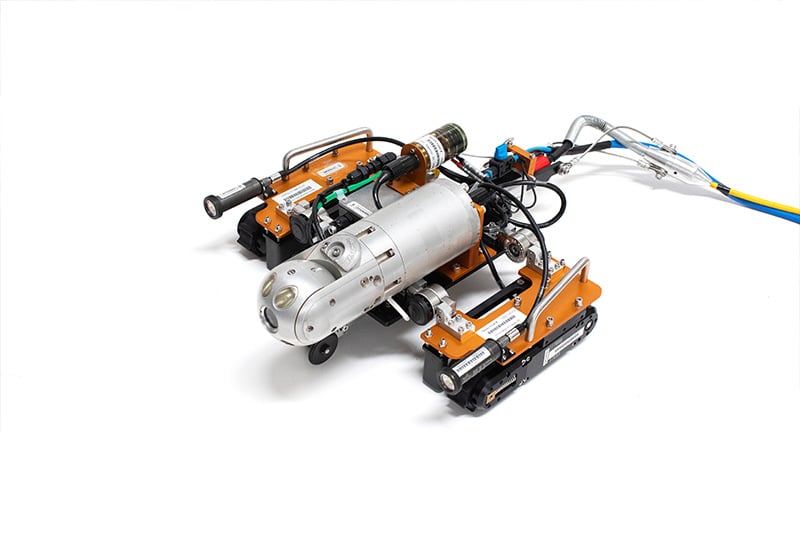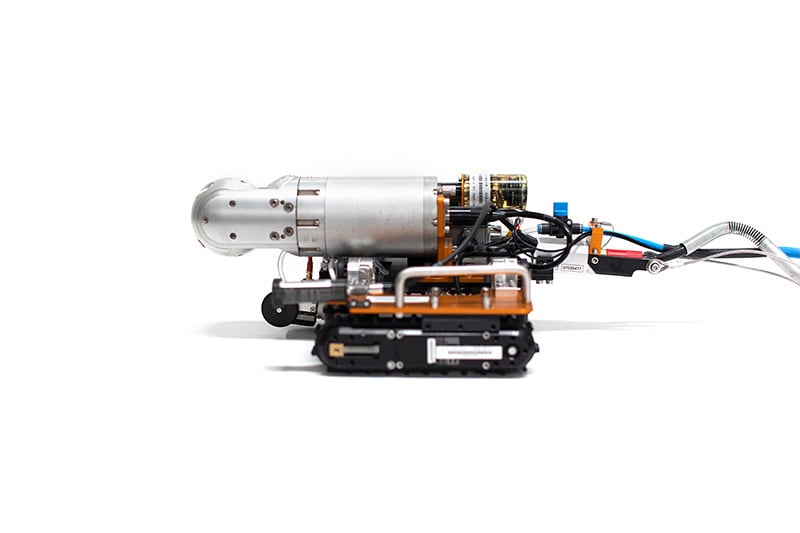The Benefits Of Tethered Robots For Inspection

When it comes to remote visual inspections (RVI) and non-destructive testing (NDT), choosing the right equipment is the most crucial factor in achieving optimum outcomes.
You’re probably doing your own research and investigation and if your inspections are for confined space applications, you’re likely to be tossing up between a tethered inspection system and a wireless/battery operated device.
There are advantages and drawbacks to each system but for challenging environments and confined spaces, a tethered system is usually the more suitable option. That said, choosing the right robotic technology is a complex process and many different factors have to be taken into consideration. Robotics is also an area that is advancing at a rapid rate and innovative new products are released all the time so it is worthwhile seeking advice from industry experts to find a solution that meets your unique needs.
Here’s what we know about the advantages of tethered robots:
Compact and manoeuverable. Lightweight systems are light and compact so they can fit through narrow openings, congested areas and very confined spaces such as pipes, ducts, pressure vessels, culverts etc.
Improved control and navigation. The operator has full control when the system is in the hands of the operator via the tether. Unmanned vehicles can be hampered by unpredictable conditions whereas tethered ones can offer improved navigation. The operator can direct the robot to a specific viewpoint to achieve pinpoint accuracy.
Eliminates uncertainty over reliability of wireless control. Wireless systems can be affected by numerous external factors. Electrical systems can interfere with the signal and some materials may actually be impenetrable to wireless transmission. A fully wired tethered system enables uninterrupted transmission of data and no communications breakdowns, making it more reliable.
Indefinite operating time. When the robotic device is attached to a power unit, it can operate indefinitely. This enables more efficient, more complete inspections because there’s no need to recharge the device in between missions or to have to cut an inspection short because of limited power.
Travels further. Tethered robotic systems can generally travel longer distances than battery-operated devices.
Easy retrieval. In the event of a mechanical failure, the tether can be used to pull the robot back in.
Of course, when using a tethered robotic device, there is always the risk that it can get snagged on objects and may have difficulty navigating multiple bends – but these challenges can be easily overcome by an experienced operator. Additional equipment such as cable handling reels and winches and a rear tether monitoring camera on the device will also help.
Clearly there are many advantages to using a tethered robot to carry out a wide range of inspections, but equipment solutions are never a ‘one-size-fits-all’ scenario. It’s about working out which system is best-suited to a particular application.
At Nexxis, one of the leading suppliers of technical equipment to industries globally, the team uses their industry experience and technical skills to identify equipment solutions that best meet customers’ unique needs and which offer value and versatility.
Nexxis carries an extensive range of technical equipment for remote visual inspection and non destructive testing including leading brands of robotic crawlers, tractors and camera systems. For more information or to view their range, visit nexxis.com.au or call their technical experts in Singapore, Houston or Australia. Visit our contact page for details.

